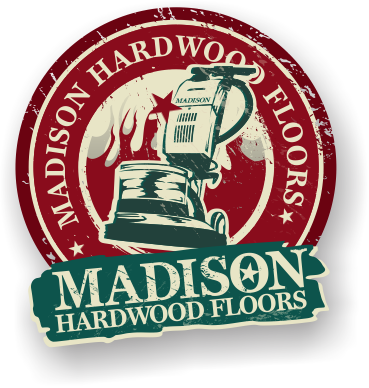Pigmented Stain
What are pigmented stains?
Most hardwood floors have only a protective coat of oil or water finish on them. Both finishes on their own naturally change the appearance of the raw wood differently. To get a greater change in the appearance of the floor, such as dark colors or other hues, we can use pigmented stains. These are oil or water based pigments that are designed to change the color of your floor beyond what either finish, water or oil, naturally do. Treating your floor with stains can add an exciting change to the appearance of the wood but also presents additional challenges to the job. These issues and limitations of staining are important to understand. When staining a wood floor, it’s important to acknowledge that wood is not a synthetic product. It’s made up of cells and became what it is by growing naturally. Although this lends itself to the beauty of the floors, it means that it may have an inconsistent physical properties such as varying densities, colors, sap content, knottiness etc.. Many times, regardless of the technique used to stain, the color and appearance of the floor may not be uniform. Other factors affecting the way your floor looks after being stained are it’s age, history, water damage, sun exposure, thickness of the wood, and application of previous stains. Because of this, it is impossible to completely control how the floor looks when applying stain. The appearance of the floor may vary within the boards themselves, room to room, and area to area.
Process of picking colors, here's how it works:
If you'd like to change the color of your floor with a pigmented stain, you'll need to pick a few colors for us to put down as samples. Take a look at some of the swatches below and let us know a few you'd like to see. When our team arrives, we'll sand a spot, put the colors down, and you'll have a day or so to consider which you'd like. We prefer to put samples directly on your floor and do not make up samples on separate boards. This is because, due to site conditions and lumber differences, a separate sample may look completely different than your actual floor. It's important to make your decision the day prior to staining so we can make sure to a have the color you've decided on. Note: We only use oil based penetrating stains . Please check the filter marked “Wood finish oil based penetrating stains“ when searching for a color.
Quick start to stain color samples
Color matching
Matching the existing color of a floor may be impossible because time changes the appearance of stain, wood, and finishes. A new floor, sanded, stained, & coated, using an identical process may look completely different than the same floor refinished 6 months ago.
Species related issues when using pigmented stain
Certain species of wood present special issues when staining because of their unique properties. The most common is Maple which has a very dense cellular structure. Because of this, it takes stains unevenly and some boards may be very dark, while others remain almost unchanged in color. Wetting the floor with water prior to staining is a technique called water popping, and is used to pop the grain of the wood to allow more stain to penetrate. Even when using the water popping technique, a stained maple floor can appear less uniform in appearance than other types of wood. It can still be a beautiful floor though! It’s just important to know what it may look like going into the process. Birch, Pine, and Fir may also take stain unevenly and look blotchy. Darker and lighter hues may exist throughout the these floors and any previous water damage on the floor tends to be a dark area.
Limitations of stain
While stains can dramatically change the appearance of the floor, there are certain limitations as to what can be done with them. Oil based stain will not hide the appearance of the grain. Generally, the grain will darken more than the heart of the wood and become more apparent than if no stain were used. Although it’s counter-intuitive, stains do not hide black spots or damage. These spots can still be seen even with an ebony stain. If your wood has a natural color to it such as Red Oak or Doug Fir, stains will generally not eliminate these colors. Red or yellow hues in the lumber tend to remain regardless of the stain. Because of the many variables affecting the appearance of your floor, matching a color to an image in a magazine, personal furniture, cabinetry or even an existing floor, may not be possible. Custom mixing stain on site can take hours, is billed hourly, and not included in the square foot cost of stain. There is no guarantee that we can achieve a specific color, and time spent mixing is charged regardless of whether a match or desired color is achieved.
Water popping
Water popping is a process of wetting the floor and allowing it to dry prior to staining. There are two benefits to water popping a hardwood floor. The primary benefit is to achieve a darker, more uniform color. The secondary benefit is to help eliminate screen marks. The water allows the grain to open up and helps the screen marks dissipate.
